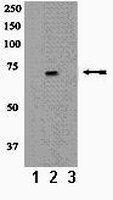Functional stability of a mixed microbial consortium producing PHA from waste carbon sources.
Erik R Coats,Frank J Loge,William A Smith,David N Thompson,Michael P Wolcott
Applied biochemistry and biotechnology
137-140
2007
Pokaż streszczenie
Polyhydroxyalkanoates (PHAs) represent an environmentally effective alternative to synthetic thermoplastics; however, current production practices are not sustainable. In this study, PHA production was accomplished in sequencing batch bioreactors utilizing real wastewaters and mixed microbial consortia from municipal activated sludge as inoculum. Polymer production reached 85, 53, and 10% of the cell dry weight from methanol-enriched pulp and paper mill foul condensate, fermented municipal primary solids, and biodiesel wastewater, respectively. Using denaturing gradient gel electrophoresis of 16S-rDNA from polymerase chain reaction-amplified DNA extracts, distinctly different communities were observed between and within wastewaters following enrichment. Most importantly, functional stability was maintained despite differing and contrasting microbial populations. | 18478444
 |
Src: regulation, role in human carcinogenesis and pharmacological inhibitors.
Tsygankov, A Y and Shore, S K
Curr. Pharm. Des., 10: 1745-56 (2004)
2004
Pokaż streszczenie
The cellular signaling machinery is a complex network of cross-talking proteins that enables dynamic communication between upstream causal factors and downstream effectors. Non-receptor tyrosine kinases, including Src, are the intermediates of signal transfer, controlling pathways as diverse as cell growth, death, differentiation, migration, and genome maintenance. When expressed as viral genes these proteins are potent carcinogens. Furthermore, analogous genetic alterations are observed, albeit not frequently, in human tumors. In a variety of tumors including those derived from the colon and breast, Src is either over expressed or constitutively active in a large percentage of patients. Increased expression or activity of Src correlates with the stage and metastatic potential of some neoplasia. The detailed knowledge of Src activation facilitates rational design of drugs that potentially interfere with either binding of ATP or substrate peptides. Several existing inhibitors are available as lead compounds for further development of Src inhibitors. | 15180537
 |
Src protein-tyrosine kinase structure and regulation.
Roskoski, Robert
Biochem. Biophys. Res. Commun., 324: 1155-64 (2004)
2004
Pokaż streszczenie
Src and Src-family protein kinases are proto-oncogenes that play key roles in cell morphology, motility, proliferation, and survival. v-Src (a viral protein) is encoded by the chicken oncogene of Rous sarcoma virus, and Src (the cellular homologue) is encoded by a physiological gene, the first of the proto-oncogenes. From the N- to C-terminus, Src contains an N-terminal 14-carbon myristoyl group, a unique segment, an SH3 domain, an SH2 domain, a protein-tyrosine kinase domain, and a C-terminal regulatory tail. The chief phosphorylation sites of Src include tyrosine 416 that results in activation from autophosphorylation and tyrosine 527 that results in inhibition from phosphorylation by C-terminal Src kinase. In the restrained state, the SH2 domain forms a salt bridge with phosphotyrosine 527, and the SH3 domain binds to the kinase domain via a polyproline type II left-handed helix. The SH2 and SH3 domains occur on the backside of the kinase domain away from the active site where they stabilize a dormant enzyme conformation. Protein-tyrosine phosphatases such as PTPalpha displace phosphotyrosine 527 from the Src SH2 domain and mediate its dephosphorylation leading to Src kinase activation. C-terminal Src kinase consists of an SH3, SH2, and kinase domain; it lacks an N-terminal myristoyl group and a C-terminal regulatory tail. Its X-ray structure has been determined, and the SH2 lobe occupies a position that is entirely different from that of Src. Unlike Src, the C-terminal Src kinase SH2 and SH3 domains stabilize an active enzyme conformation. Amino acid residues in the alphaD helix near the catalytic loop in the large lobe of C-terminal Src kinase serve as a docking site for the physiological substrate (Src) but not for an artificial substrate (polyGlu(4)Tyr). | 15504335
 |











